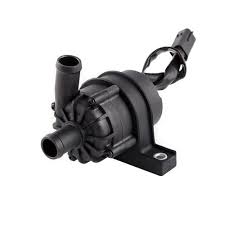As wind energy has continued to grow as a renewable energy source, it has become increasingly important for wind farm operators to maximize turbine uptime and performance. One of the most effective ways to do this is through implementing comprehensive condition monitoring systems. These systems allow operators to closely track the health and operation of each turbine, enabling early detection of potential issues before they lead to downtime.
Condition Monitoring Components
A full-featured condition monitoring system incorporates sensors and software to gather data from multiple subsystems within each turbine. Some of the most important components to monitor include:
– Gearbox: Sensors track parameters like vibration levels, operating temperature, and oil analysis to identify early signs of gearbox wear or failure. Gearboxes are one of the most maintenance-intensive components.
– Generator: Vibration sensors and thermal imaging help locate potential bearing or winding issues in the generator before they cause an outage.
– Blades: Blade strain sensors and ultrasonic testing equipment detect defects in the blades to avoid catastrophic failures. Lightning strikes and erosion over time can weaken blades.
– Hydraulics: Flow meters and pressure transducers in hydraulic circuits monitor for leaks or other problems that could impair braking or pitch control functions.
– Electric systems: Current and voltage monitoring ensures proper operation of the power electronics, control systems, and connection to the grid.
Data from these widespread sensors is wirelessly transmitted to a central supervisory control and data acquisition (SCADA) system for analysis. Sophisticated algorithms detect abnormal operating patterns and automatically generate maintenance recommendations.
Benefits of Condition Monitoring
By continually tracking the “health” of each major subsystem, condition monitoring provides several crucial advantages over traditional reactive or time-based maintenance:
Reduced Downtime – Detecting issues early allows repairs to be scheduled during planned downtimes rather than emergencies. This minimizes costly and unplanned outages.
Improved Availability – Turbines can run closer to their full lifetime potential as minor problems are caught before requiring component replacements. Availability is a key metric for wind farm profitability.
Preventive Maintenance – Instead of replacing components according to conservative schedules, condition data highlights specific turbines and parts actually nearing end of life. This lowers maintenance costs.
Failure Prediction – Data analysis can discern patterns predictive of impending faults. Forewarning enables maintenance to be brought forward in time to prevent stoppages during high wind production periods.
Life Extension – With more visibility into real operating stresses, original component design lives may be extended through refined replacement criteria focusing only on parts truly unfit for further operation.
Maximizing Energy Production – When combined with SCADA control, condition data allows turbine operating profiles to be adjusted for optimal performance customized to each machine’s current degradation state.
A Holistic Solution
The most advanced Wind Turbine Condition Monitoring Systems do far more than passively track sensor readings. Instead, they form a holistic digital twin solution. Beyond fault detection algorithms and reporting functions, these systems factor in detailed turbine configuration data as well as extensive environmental and operational loading histories recorded by the SCADA.
This contextual information allows for in-depth failure modeling and remaining useful life projections. Predictive maintenance strategies can be automatically maintained and continuously optimized based on each individual asset’s unique operation. Spare part inventories and service crew schedules are facilitated through accurate forecasts of forthcoming maintenance events.
Remote diagnoses through analytics platforms further cut response times by identifying causes of faults directly from SCADA alarms. Augmented reality and virtual reality bring visual inspection capabilities for on-site technicians without requiring travel during pandemic restrictions. Finally, asset performance monitoring tools benchmark energy output to realize residual lifetime production potential from performance enhancement recommendations.
As the wind industry scales up globally to meet carbon reduction targets, maximizing asset availability through condition monitoring will be imperative. These systems deliver major financial and sustainability wins by minimizing lost output from unexpected downtime events. Going forward, the next generation of AI-powered prognostics is set to bring even deeper fleet-wide insights crucial for cost-effective wind power operations. With digital solutions continuously evolving, wind energy remains on track for a bright renewable future.
*Note:
1. Source: Coherent Market Insights, Public sources, Desk research
2. We have leveraged AI tools to mine information and compile it




